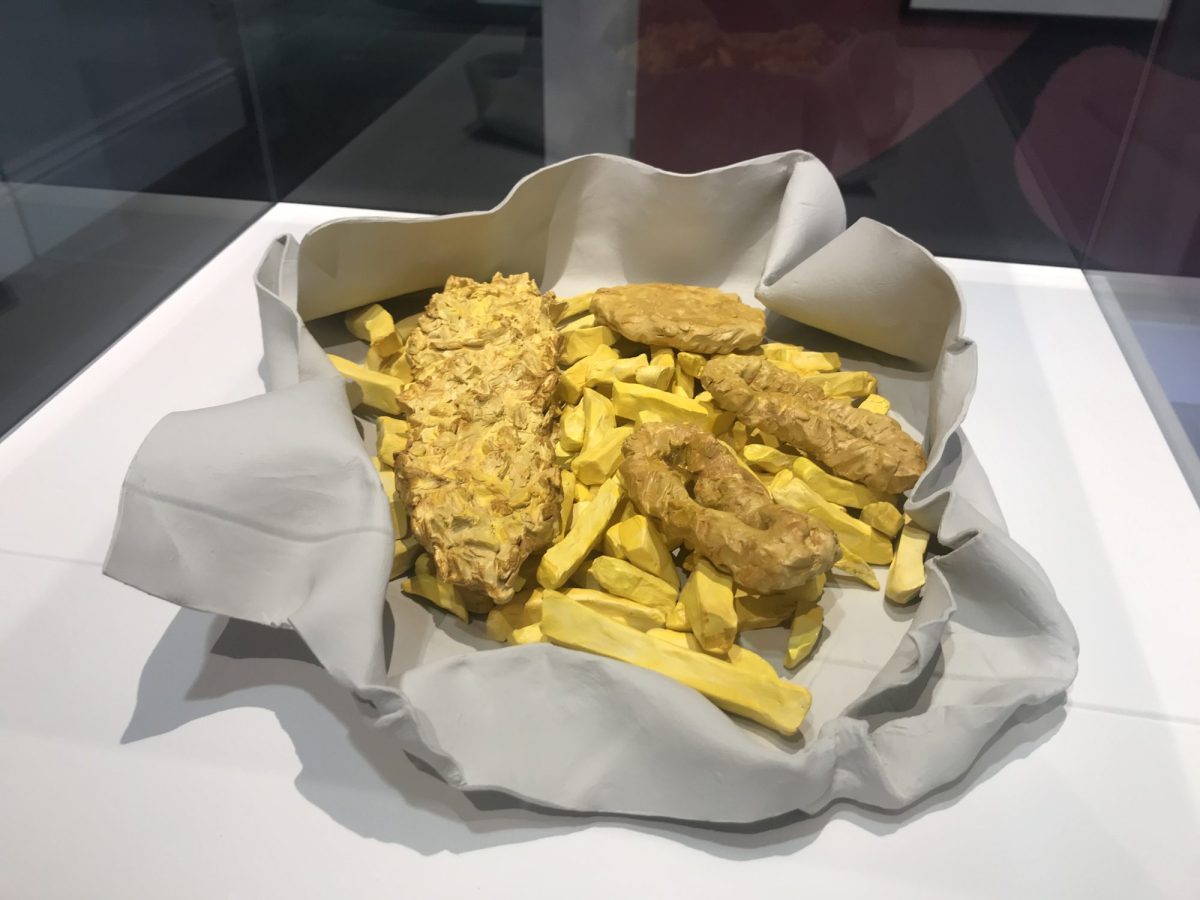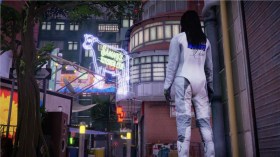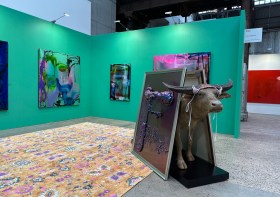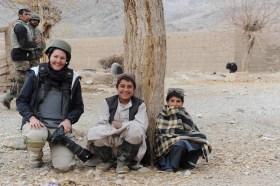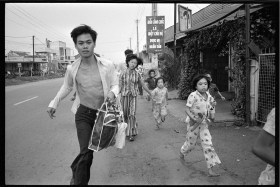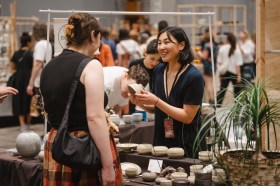Curated by Richard Cornish, award-winning food writer and author, The Dirty Dozen is an exhibition featuring actual-sized ceramic sculptures of 12 of the unhealthy staples of late-night street food in Melbourne, with some accompanying stories.
The food we eat comes from many different places. It may surprise you that carrots are originally from Iran, tomatoes and potatoes are from Peru, watermelons are from Africa and kiwifruit are from China (no, not New Zealand). Similarly, the cooked food that gets eaten in Melbourne comes from many different places – pizzas from Italy, souvlaki from Greece, chow mein from China, tacos from Mexico and curries from India are just a tiny (literal) taste of how ingrained multiculturalism is on Melbourne’s menu.
It seems hard to believe now since oysters have such a regal and expensive reputation, but oysters used to be a working-class street food, not just in Australia but also Scotland and other countries on the European coast. Therefore, a ceramic sculpture of shucked oysters with lemon is one of the dozen installations. The second one that history has warped is the saveloy – once sold from travelling carts to the annoyance of respectable people – it’s now transformed into today’s footy frank (and the battered sav, which the exhibition doesn’t mention).
The rest of the dozen sculptures, especially commissioned and created by Kenny Pittock, are so unhealthy, yet so familiar, that some people may get embarrassed looking at them; for instance, a souvlaki, Chiko roll, fish ‘n’ chips, hamburger, HSP, meat pie, ice-cream and dim sims sit behind glass, as though saying ‘Remember me from the other night?’. They’re the foods that no one takes foodie pics of. Each comes with a story of its origin. Fruit is also there, looking decidedly out of place as the only remotely healthy thing on display.
However, this exhibition seems unfocused, because it has three main sections: dirty street food, grandiose banquets of Melbourne’s past elite and gargantuan markets, of which only the Victoria Markets remains. Only food connects them. The banquets section of the room, ‘The Tables of the Powerful’, shows antique menus from the late 1860s and turn of the century, huge feasts for diplomats and politicians.
The markets section, ‘Temples of Bounty’, offers photos and stories of massive markets in Melbourne, including a giant fish market that used to be where Flinders Street Station now stands.
The exhibition’s tagline is ‘Stories behind the food that made Melbourne’, but its title is The Dirty Dozen, referring only to its centrepieces of ceramic culinary culprits. Perhaps this exhibition is simply reaching too high for a single small show – it’s trying to cover street food origins, feasts of the elite and the proliferation of markets at the same time, but each of these three very large topics deserves research, focus and an exhibition all to itself.
Putting these fragmentary pieces together in this way is a little like getting Edvard Munch’s painting The Scream, giving it the Mona Lisa’s hands and one of Andy Warhol’s soup cans and calling it an introduction to art – all three artists need room to breathe, but they’ve been stuck together.
Read: Theatre review: The Comeuppance, Red Stitch Actors’ Theatre
Despite this, the show is free, and it’s right in the middle of Melbourne, so when you’re in the area, drop in and check it out. Remember to pick up a copy of the exhibition booklet, which has practically every bit of art and information that’s in the show. So, in effect, with this booklet, you can literally have the exhibition eat in or take away.
The Dirty Dozen will be exhibited at City Gallery, Melbourne Town Hall until 29 August 2025.
Free entry.
